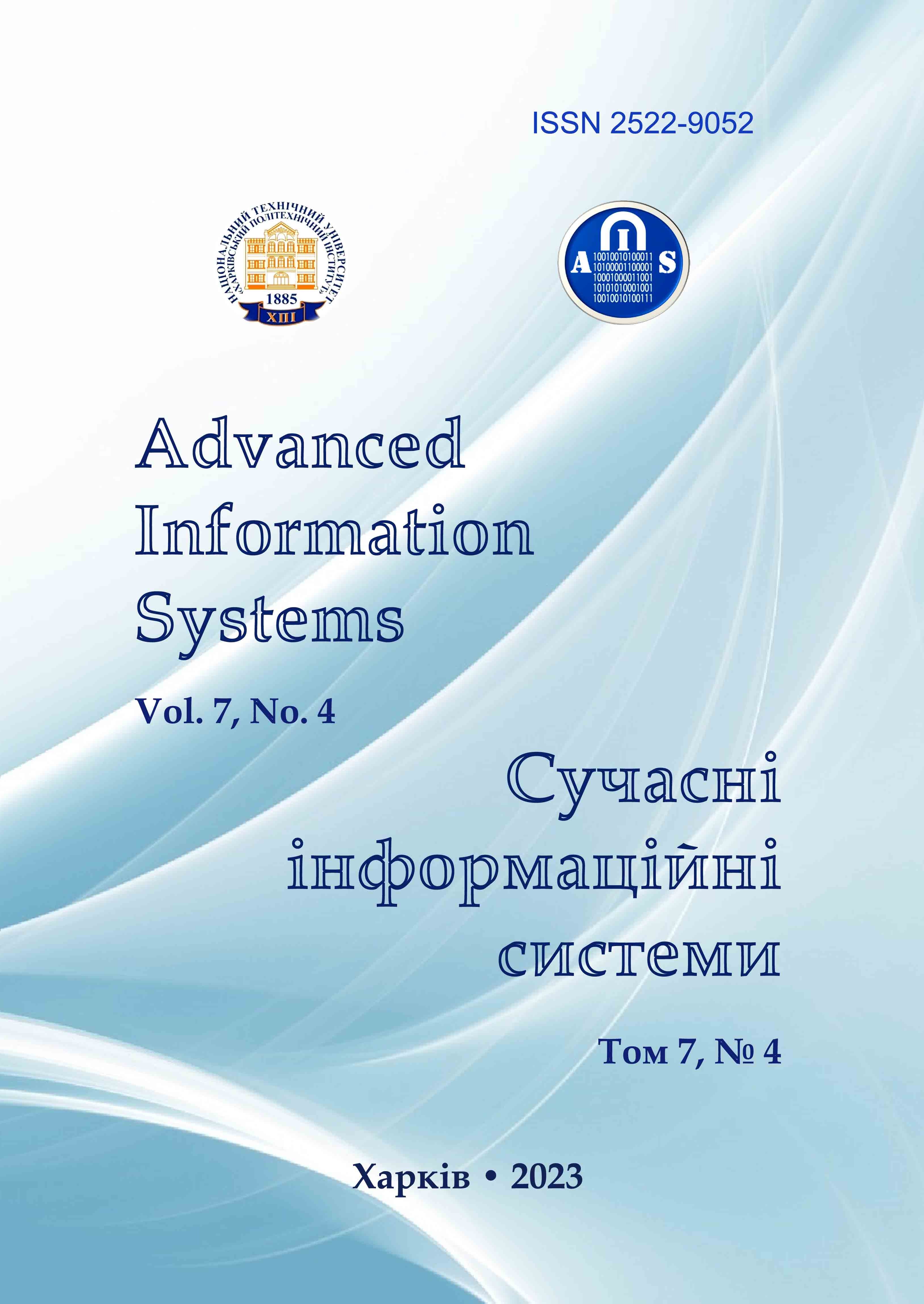HYBRID APPROACH FOR DATA FILTERING AND MACHINE LEARNING INSIDE CONTENT MANAGEMENT SYSTEM
Main Article Content
Abstract
The object of research is the processes of data filtering and machine learning in content management systems. The subject of research is developing a hybrid approach to data filtering based on a combination of supervised and unsupervised machine learning. The article explores machine learning approaches to content management and how they can change the way we organize, categorize, and derive value from vast amounts of data. The main goal is to develop and use a hybrid approach for data filtering and training that will help optimize resource consumption and perform supervised training for better categorization in the future. This approach includes elements of supervised and unsupervised learning using the BERT architecture that uses this kind of flow that help reduce resource usage and adjust the algorithm to perform better in a specific area. As a result, thanks to this approach, the intelligent system was able to independently optimize for a specific field of use and help to reduce the costs of using resources. Conclusion. After applying a hybrid approach of data filtering and machine learning to existing data streams, we obtain a performance increase of up to 5%, and this percentage increases depending on the running time of the application.
Article Details
References
Shen, Q. (2022), “A machine learning approach to predict the result of Leaque of Legends”, International Conference on Machine Learning and Knowledge engineering (MLKE), Guilin, China, doi: https://doi.org/10.1109/MLKE55170.2022.00013
Goyushova, U. (2023), “Algorithms for finding non-intersecting roads on images”, Advanced Information Systems, Vol. 7, no. 2, pp. 5–8, Jun. 2023, doi: https://doi.org/10.20998/2522-9052.2023.2.01
Subramanian, S., Tseng, B., Barbieri, R. and Browm E.N. (2021), “Unsupervised Machine Learning Methods for Artifact Removal in Electrodermal Activity”, in 43rd Annual International Conference of the IEEE Engineering in Medicine & Biology Society (EMBC), pp.399–402, doi: https://doi.org/10.1109/EMBC46164.2021.9630535
Devlin, J., Chang, K., Lee, M.-W. and Toutanova, K. (2019), “BERT: Pre-training of Deep Bidirectional Transformers for Language Understanding”, Proceedings of the 2019 Conference of the North American Chapter of the Association for Computational Linguistics (NAACL-HLT 2019), pp. 4171–4186, doi: https://doi.org/ 10.18653/v1/N19-1423
Dun, B., Zakovorotnyi, O. and Kuchuk, N. (2023), “Generating currency exchange rate data based on Quant-Gan model”, Advanced Information Systems, Vol. 7, no. 2, pp. 68–74, doi: https://doi.org/10.20998/2522-9052.2023.2.10
Guven, Z.A. (2021), “Comparison of BERT models and nachine learning methods for sentiment analysis on Turkish Tweets”, 6th Int. Conf. on ComputerScience and Eng. (UBMK), pp. 98–101, doi: https://doi.org/10.1109/UBMK52708.2021.9559014
Radford., A., Wu, J., Child, R., Luan., D., Amodei, D. and Sutskever, I. (2019), “Language Models are Unsupervised Multitask Learners. OpenAI Blog”, available at: https://d4mucfpksywv.cloudfront.net/better-language-models/language-models.pdf
Kuchuk, N., Mozhaiev, O., Mozhaiev, M. and Kuchuk, H. (2017), “Method for calculating of R-learning traffic peakedness”, 2017 4th International Scientific-Practical Conference Problems of Infocommunications Science and Technology, PIC S and T 2017 – Proceedings, pp. 359–362, doi: https://doi.org/10.1109/INFOCOMMST.2017.8246416
Tegen, A., Davidssom, P. and Persson, J.A. (2021), “Active Learning and Machine Teaching for Online Learning: A Study of Attention and Labelling Cost”, 20th IEEE International Conference on Machine Learning and Applications (ICMLA), pp. 1215–1220, doi: https://doi.org/10.1109/ICMLA52953.2021.00197
Darouich, A., Khoukhi, F. and Douzi, K. (2015), “A dynamic learning content pattern for adaptive learning environment”, 10th Int. Conf. on Intelligent Systems: Theories and Applications (SITA), pp. 1–6, doi: https://doi.org/10.1109/SITA.2015.7358428
Bobalo, Yu., Dyvak, M., Krepych, S. and Stakhiv, P. (2014), “Evaluation of functional device suitability, with considering of random technological deviations of the parameters from the nominal and process of component aging”, Przegld Elektrotechniczny, Warszawa, Poland, Vol. 2014, No. 4. pp. 224–228, doi: https://doi.org/10.12915/pe.2014.04.54
Kovalenko, A., Kuchuk, H., Kuchuk, N. and Kostolny, J. (2021), “Horizontal scaling method for a hyperconverged network”, 2021 International Conference on Information and Digital Technologies (IDT), Zilina, Slovakia, doi: https://doi.org/10.1109/IDT52577.2021.9497534
Spivak, I., Krepych, S., Litvynchuk, M. and Spivak, S. (2021), “Validation and data processing in JSON format”, 19th IEEE Int. Conf. on ST, Proc. (EUROCON2021), pp. 326–330, doi: https://doi.org/10.1109/EUROCON52738.2021.9535582
Kovalenko, A. and Kuchuk, H. (2022), “Methods to Manage Data in Self-healing Systems”, Studies in Systems, Decision and Control, Vol. 425, pp. 113–171, doi: https://doi.org/10.1007/978-3-030-96546-4_3
Sanzharovskyi, A. and Yurchyshyn, V. (2023), “A modified method of detecting fake news based on machine learning algorithms”, Bulletin of the Cherkasy State Technological University, Vol. 2, pp. 58–70, (in Ukrainian), doi: https://doi.org/10.24025/ 2306-4412.2.2023.279984
Yaloveha, V., Hlavcheva, D., Podorozhniak, A. and Kuchuk, H. (2019), “Fire hazard research of forest areas based on the use of convolutional and capsule neural networks”, 2019 IEEE 2nd Ukraine Conference on Electrical and Computer Engineering, UKRCON 2019 – Proceedings, DOI: http://dx.doi.org/10.1109/UKRCON.2019.8879867
Koriashkina, L. S. and Symonets, H. V. (2021), “Application of machine learning algorithms for processing comments from the youtube video hosting under training videos”, Science and Transport Progress, (6(90), pp. 33–42 (in Ukrainian), doi: https://doi.org/10.15802/stp2020/225264
